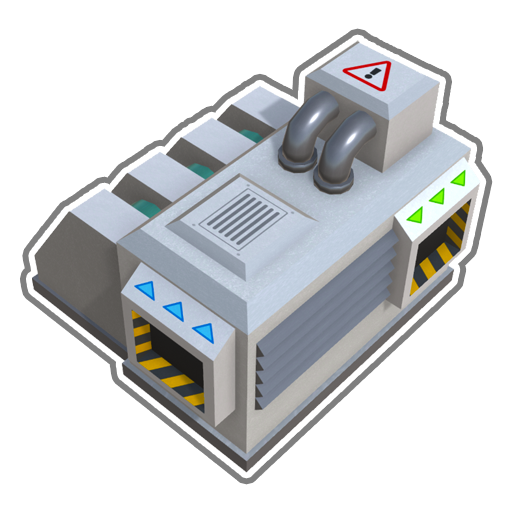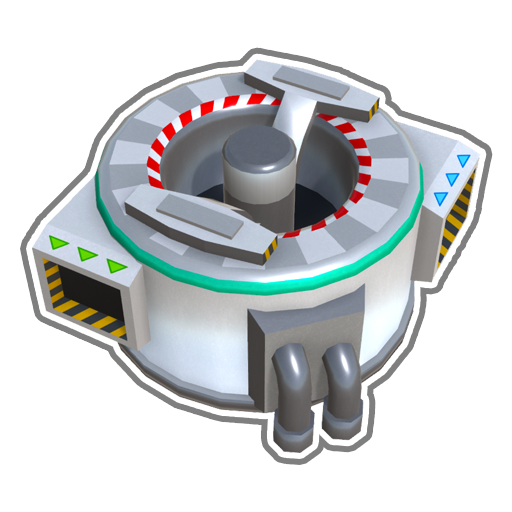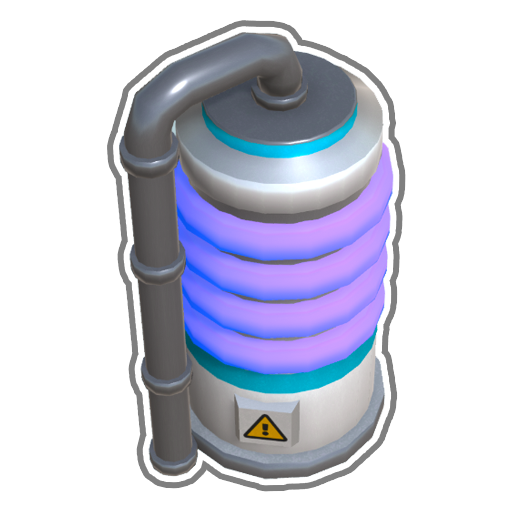#fastest supercomputer in the world
Text
youtube
#supercomputer#tesla supercomputer#dojo supercomputer#elon musk supercomputer#supercomputers#fastest supercomputer#dojo supercomputer explained#world's most powerful supercomputers#impressive performance#top 10 supercomputers#how dojo supercomputer works#most powerful supercomputer#most powerful supercomputers#what is a supercomputer#the most powerful supercomputer in the world#ai overhyped technology#elon musk's engineering masterpiece#ai clone review#Youtube
0 notes
Text
Hear me out:
Huge 20ft supercomputer robot woman who works for NASA or some other large organization. Her build being built for looks and efficiency, sleek and modern but having a screen for a head to show everything that’s needed with multiple plug in ports all over her back.
…and her 5ft robot gf who’s more akin to a subpar gaming computer that streams for a living. Who’s built more like a standard humanish robot body and frame.
The two met when the small one got lost looking for a GameStop and ended up meeting the other on the outskirts of a facility (she sucks hard with directions =p). The small one didn’t k ow what they were and just began talking about her interests and asking where to go. They found it amusing and decided to become friends with them. Mostly because the rest of the bots at her work place were rather boring and only ever focused on work related topics.
One thing led to another and the two now live in a home designed for the supercomputer. With a little corner now accommodated for the other.
In their free time they like to spend time together just laying down while charging or with the small one playing her games on their back. Which allows them to plug in their own computer to have the fastest gaming set up in the world!
Course she doesn’t do this too often since it feels like she’s taking advantage of her, but the other doesn’t mind. She actually likes it since it allows her to watch while she works on her own thing.
As for other ‘activities’…the two found they loved a bit of a reverse role. With the small one being the dom and acting as if she’s superior while the other figuratively and literally bows down to her.
Along with allowing her to have access to her entire body and internal processes, letting the small one tease her as she shuts down the programs that make her run. Causing the other to experience glitching and near crashes which are something she never felt before, and add to the humiliation and pleasure.
They keep going until they begin to overheat and stop for the day, going to cuddle and after care.
God I wish it was me >~<
298 notes
·
View notes
Text

The Cray X-MP was a supercomputer designed, built and sold by Cray Research. It was announced in 1982 as the "cleaned up" successor to the 1975 Cray-1, and was the world's fastest computer from 1983 to 1985 with a quad-processor system performance of 800 MFLOPS. The principal designer was Steve Chen.
76 notes
·
View notes
Text



A CRAY-1 SUPERCOMPUTER
CRAY RESEARCH, INC., 1976-8
Serial Number 12
Arranged in a central C-shaped core, with alternating red and yellow panels, the 4th panel replaced with perspex for internal viewing, external cushioned seating, with first two panels lifting to reveal compressor.
One of the most aesthetically striking breakthroughs in supercomputing history.
Announced in 1975, this pioneering supercomputer was designed by the visionary engineer Seymour Cray and produced by Cray Research, with an original price tag of almost $8 million. It heralded a new epoch in high-performance computing and stands as a tangible monument to an era when the boundaries of speed and capability were pushed to unprecedented heights.
The Cray-1, known for its distinctive C-shaped design, represents a stark departure from the rectilinear configurations of its predecessors. It is both an aesthetic triumph and a paradigm shift in functional innovation. The unique shape reduced the length of wiring within the machine, thereby enhancing its speed and efficiency—a critical consideration when milliseconds could mean the difference between groundbreaking discoveries and computational impasses. At the heart of it lies its unparalleled processing power. Capable of performing 160 million floating-point operations per second (FLOPS), the Cray-1 quickly became the fastest computer in the world upon its release. This extraordinary capability enabled scientists and researchers to tackle complex problems in fields such as meteorology, computational chemistry, and physics simulations with a level of precision and speed previously unattainable. The Cray-1 was instrumental in modelling intricate phenomena, from weather patterns to nuclear reactions, pushing the frontiers of scientific research.
Christie’s
28 notes
·
View notes
Text
With the exceptions of North Korea and Cuba, the communist world has merged onto the capitalist highway in a couple different ways during the twenty-first century. As you’ve read, free-trade imperialism and its cheap agricultural imports pushed farmers into the cities and into factory work, lowering the global price of manufacturing labor and glutting the world market with stuff. Forward-thinking states such as China and Vietnam invested in high-value-added production capacity and managed labor organizing, luring links from the global electronics supply chain and jump-starting capital investment. Combined with capital’s hesitancy to invest in North Atlantic production facilities, as well as a disinclination toward state-led investment in the region, Asian top-down planning erased much of the West’s technological edge. If two workers can do a single job, and one worker costs less, both in wages and state support, why pick the expensive one? Foxconn’s 2017 plan to build a U.S. taxpayer–subsidized $10 billion flat-panel display factory in Wisconsin was trumpeted by the president, but it was a fiasco that produced zero screens. The future cost of labor looks to be capped somewhere below the wage levels many people have enjoyed, and not just in the West.
The left-wing economist Joan Robinson used to tell a joke about poverty and investment, something to the effect of: The only thing worse than being exploited by capitalists is not being exploited by capitalists. It’s a cruel truism about the unipolar world, but shouldn’t second place count for something? When the Soviet project came to an end, in the early 1990s, the country had completed world history’s biggest, fastest modernization project, and that didn’t just disappear. Recall that Cisco was hyped to announce its buyout of the Evil Empire’s supercomputer team. Why wasn’t capitalist Russia able to, well, capitalize? You’re already familiar with one of the reasons: The United States absorbed a lot of human capital originally financed by the Soviet people. American immigration policy was based on draining technical talent in particular from the Second World. Sergey Brin is the best-known person in the Moscow-to-Palo-Alto pipeline, but he’s not the only one.
Look at the economic composition of China and Russia in the wake of Soviet dissolution: Both were headed toward capitalist social relations, but they took two different routes. The Russian transition happened rapidly. The state sold off public assets right away, and the natural monopolies such as telecommunications and energy were divided among a small number of skilled and connected businessmen, a category of guys lacking in a country that frowned on such characters but that grew in Gorbachev’s liberalizing perestroika era. Within five years, the country sold off an incredible 35 percent of its national wealth. Russia’s richest ended the century with a full counterrevolutionary reversal of their fortunes, propelling their income share above what it was before the Bolsheviks took over. To accomplish this, the country’s new capitalists fleeced the most vulnerable half of their society. “Over the 1989–2016 period, the top 1 percent captured more than two-thirds of the total growth in Russia,” found an international group of scholars, “while the bottom 50 percent actually saw a decline in its income.” Increases in energy prices encouraged the growth of an extractionist petro-centered economy. Blood-covered, teary, and writhing, infant Russian capital crowded into the gas and oil sectors. The small circle of oligarchs privatized unemployed KGB-trained killers to run “security,” and gangsters dominated politics at the local and national levels. They installed a not particularly well-known functionary—a former head of the new intelligence service FSB who also worked on the privatization of government assets—as president in a surprise move on the first day of the year 2000. He became the gangster in chief.
Vladimir Putin’s first term coincided with the energy boom, and billionaires gobbled up a ludicrous share of growth. If any individual oligarch got too big for his britches, Putin was not beyond imposing serious consequences. He reinserted the state into the natural monopolies, this time in collaboration with loyal capitalists, and his stranglehold on power remains tight for now, despite the outstandingly uneven distribution of growth. Between 1980 and 2015, the Russian top 1 percent grew its income an impressive 6.2 percent per year, but the top .001 percent has maintained a growth rate of 17 percent over the same period. To invest these profits, the Russian billionaires parked their money in real estate, bidding up housing prices, and stashed a large amount of their wealth offshore. Reinvestment in Russian production was not a priority—why go through the hassle when there were easier ways to keep getting richer?
While Russia grew billionaires instead of output, China saw a path to have both. As in the case of Terry Gou, the Chinese Communist Party tempered its transition by incorporating steadily increasing amounts of foreign direct investment through Hong Kong and Taiwan, picking partners and expanding outward from the special economic zones. State support for education and infrastructure combined with low wages to make the mainland too attractive to resist. (Russia’s population is stagnant, while China’s has grown quickly.) China’s entry into the World Trade Organization, in 2001, gave investors more confidence. Meanwhile, strong capital controls kept the country out of the offshore trap, and state development priorities took precedence over extraction and get-rich-quick schemes. Chinese private wealth was rechanneled into domestic financial assets—equity and bonds or other loan instruments—at a much higher rate than it was in Russia. The result has been a sustained high level of annual output growth compared to the rest of the world, the type that involves putting up an iPhone City in a matter of months. As it has everywhere else, that growth has been skewed: only an average of 4.5 percent for the bottom half of earners in the 1978–2015 period compared to more than 10 percent for the top .001 percent. But this ratio of just over 2–1 is incomparable to Russia’s 17–.5 ration during the same period.
Since the beginning of the twenty-first century, certain trends have been more or less unavoidable. The rich have gotten richer relative to the poor and working class—in Russia, in China, in the United States, and pretty much anywhere else you want to look. Capital has piled into property markets, driving up the cost of housing everywhere people want to live, especially in higher-wage cities and especially in the world’s financial centers. Capitalist and communist countries alike have disgorged public assets into private pockets. But by maintaining a level of control over the process and slowing its tendencies, the People’s Republic of China has built a massive and expanding postindustrial manufacturing base.
It’s important to understand both of these patterns as part of the same global system rather than as two opposed regimes. One might imagine, based on what I’ve written so far, that the Chinese model is useful, albeit perhaps threatening, in the long term for American tech companies while the Russian model is irrelevant. Some commentators have phrased this as the dilemma of middle-wage countries on the global market: Wages in China are going to be higher than wages in Russia because wages in Russia used to be higher than wages in China. But Russia’s counterrevolutionary hyper-bifurcation has been useful for Silicon Valley as well; they are two sides of the same coin. Think about it this way: If you’re a Russian billionaire in the first decades of the twenty-first century looking to invest a bunch of money you pulled out of the ground, where’s the best place you could put it? The answer is Palo Alto.
Malcolm Harris, Palo Alto
54 notes
·
View notes
Text
Erin Reed at Erin In The Morning:
Yesterday, news broke that transgender woman and computer pioneer Lynn Conway passed away at the age of 86. Her story is nothing short of remarkable. Conway helped pioneer early supercomputers at IBM but was fired after she transitioned. She went “stealth” and had to rebuild her career from the ground up, starting as a contract programmer at Xerox with “no experience.” Then, she did it all over again, pioneering VLSI—a groundbreaking technology that allowed for microchips to be made small enough to fit in your pocket, paving the way for smartphones and personal computers. In 1999, she broke stealth, becoming an outspoken advocate for transgender people.
Conway first attempted to transition at MIT in 1957 at the age of 19 years old. At the time, the environment was not accepting enough for transgender people to do so. She would have faced enormous barriers to medical transition, as few doctors were knowledgeable enough to prescribe hormone therapy a the time. Like many transgender people seeing enormous barriers to care, she spent the following years closeted.
Eventually, she was hired by IBM where she helped develop the world’s fastest supercomputer at the time on the Advanced Computing System (ACS) project. The computer would become the first to use a “superscalar” design, which made it capable of performing several tasks at once, dramatically improving its performance and making it much faster than previous computers. Despite her pivotal role in the project, she was fired when she informed her employer that she wanted to transition.
What she did next is nothing short of remarkable. Realizing that as an openly transgender woman in 1968, few companies would hire her, she went “stealth” and pretended she had no significant prior experience in computers. She quickly advanced through the ranks and was hired by Xerox, where she famously developed VLSI, or Very Large Scale Integration. This groundbreaking technology allowed for thousands of transistors to be packed onto a single chip, revolutionizing electronics by making cell phones and modern computers possible through miniaturization and increased processing power.
Conway didn’t stop there. After gaining fame for her computer innovations, she came out in 1999 to advocate for transgender people. She was among the early critics of Dr. Kenneth Zucker, an anti-trans researcher still cited today by those working to ban gender-affirming care. Conway slammed Zucker for practicing “reparative therapy,” a euphemism for conversion therapy. Notably, Zucker’s research continues to make false claims that “80% of transgender kids desist from being trans,” numbers based on his clinic's practices, which closely mirrored gay conversion therapy. That clinic has since been shut down over those practices.
RIP to Lynn Conway. She was a tireless fighter for trans rights in a time that publicly supporting LGBTQ+ causes (let alone trans causes) wasn't popular, and that led to her firing from IBM in 1968.
Conway helped develop the supercomputer while at IBM, and later on at Xerox, helped developed microchip technology found in cell phones. 🏳️⚧️🏳️🌈
20 notes
·
View notes
Text
This is a little old, but it's still currently true that the fastest supercomputer in the world is in Tennessee
#musk wants to get his name on something faster#but he doesn't really want to pay his own money for it
8 notes
·
View notes
Text

The Control Data 6600
Generally considered to be the first successful supercomputer, it held the title of the world's fastest computer from 1964 to 1969.
Developed and created by legendary computing pioneer Seymour Cray, the 6600 prompted the rival IBM CEO of the time to write in a memo to his employees: "Last week, Control Data..announced the 6600 system. I understand that in the laboratory developing the system there are only 34 people including the janitor. Of these, 14 are engineers and 4 are programmers…Contrasting this modest effort with our vast development activities, I fail to understand why we have lost our industry leadership position by letting someone else offer the world's most powerful computer."
via @\[email protected]
#docubyte#control data 6600#seymour cray#cray supercomputer#ibm#1960s#design#retro tech#computers#tech#technology#tech history
8 notes
·
View notes
Note
If poison reaches it's expiration date, does that make it more poisonous or less poisonous?????
-3 am anon
The fastest supercomputer in the world takes 24 million watts of power to run, but our brains only need 20 watts and operate over 100,000 times faster.
7 notes
·
View notes
Text
I know that the average person’s opinion of AI is in a very tumultuous spot right now - partly due to misinformation and misrepresentation of how AI systems actually function, and partly because of the genuine risk of abuse that comes with powerful new technologies being thrust into the public sector before we’ve had a chance to understand the effects; and I’m not necessarily talking about generative AI and data-scraping, although I think that conversation is also important to have right now. Additionally, the blanket term of “AI” is really very insufficient and only vaguely serves to ballpark a topic which includes many diverse areas of research - many of these developments are quite beneficial for human life, such as potentially designing new antibodies or determining where cancer cells originated within a patient that presents complications. When you hear about artificial intelligence, don’t let your mind instantly gravitate towards a specific application or interpretation of the tech - you’ll miss the most important and impactful developments.
Notably, NVIDIA is holding a keynote presentation from March 18-21st to talk about their recent developments in the field of AI - a 16 minute video summarizing the “everything-so-far” detailed in that keynote can be found here - or in the full 2 hour format here. It’s very, very jargon-y, but includes information spanning a wide range of topics: healthcare, human-like robotics, “digital-twin” simulations that mirror real-world physics and allow robots to virtually train to interact and navigate particular environments — these simulated environments are built on a system called the Omniverse, and can also be displayed to Apple Vision Pro, allowing designers to interact and navigate the virtual environments as though standing within them. Notably, they’ve also created a digital sim of our entire planet for the purpose of advanced weather forecasting. It almost feels like the plot of a science-fiction novel, and seems like a great way to get more data pertinent to the effects of global warming.
It was only a few years ago that NVIDIA pivoted from being a “GPU company” to putting a focus on developing AI-forward features and technology. A few very short years; showing accelerating rates of progress. This is whenever we began seeing things like DLSS and ray-tracing/path-tracing make their way onto NVIDIA GPUs; which all use AI-driven features in some form or another. DLSS, or Deep-Learning Super Sampling, is used to generate and interpolate between frames in a game to boost framerate, performance, visual detail, etc - basically, your system only has to actually render a handful of frames and AI generates everything between those traditionally-rendered frames, freeing up resources in your system. Many game developers are making use of DLSS to essentially bypass optimization to an increasing degree; see Remnant II as a great example of this - runs beautifully on a range of machines with DLSS on, but it runs like shit on even the beefiest machines with DLSS off; though there are some wonky cloth physics, clipping issues, and objects or textures “ghosting” whenever you’re not in-motion; all seem to be a side effect of AI-generation as the effect is visible in other games which make use of DLSS or the AMD-equivalent, FSR.
Now, NVIDIA wants to redefine what the average data center consists of internally, showing how Blackwell GPUs can be combined into racks that process information at exascale speeds — which is very, very fucking fast — speeds like that have only ever actually been achieved on some 4 or 5 machines on the planet, and I think they’ve all been quantum-based machines until now; not totally certain. The first exascale computer came into existence in 2022, called Frontier, it was deemed the fastest supercomputer in existence in June 2023 - operating at some 1.19 exaFLOPS. Notably, this computer is around 7,300 sq ft in size; reminding me of the space-race era supercomputers which were entire rooms. NVIDIA’s Blackwell DGX SuperPOD consists of around 576 GPUs and operates at 11.5 exaFLOPS, and is about the size of standard row of server racks - much smaller than an entire room, but still quite large. NVIDIA is also working with AWS to produce Project Ceiba, another supercomputer consisting of some 20,000GPUs, promising 400 exaFLOPS of AI-driven computation - it doesn’t exist yet.
To make my point, things are probably only going to get weirder from here. It may feel somewhat like living in the midst of the Industrial Revolution, only with fewer years in between each new step. Advances in generative-AI are only a very, very small part of that — and many people have already begun to bury their heads in the sand as a response to this emerging technology - citing the death of authenticity and skill among artists who choose to engage with new and emerging means of creation. Interestingly, the Industrial Revolution is what gave birth to modernism, and modern art, as well as photography, and many of the concerns around the quality of art in this coming age-of-AI and in the post-industrial 1800s largely consist of the same talking points — history is a fucking circle, etc — but historians largely agree that the outcome of the Industrial Revolution was remarkably positive for art and culture; even though it took 100 years and a world war for the changes to really become really accepted among the artists of that era. The Industrial Revolution allowed art to become detached from the aristocratic class and indirectly made art accessible for people who weren’t filthy rich or affluent - new technologies and industrialization widened the horizons for new artistic movements and cultural exchanges to occur. It also allowed capitalist exploitation to ingratiate itself into the western model of society and paved the way for destructive levels of globalization, so: win some, lose some.
It isn’t a stretch to think that AI is going to touch upon nearly every existing industry and change it in some significant way, and the events that are happening right now are the basis of those sweeping changes, and it’s all clearly moving very fast - the next level of individual creative freedom is probably only a few years away. I tend to like the idea that it may soon be possible for an individual or small team to create compelling artistic works and experiences without being at the mercy of an idiot investor or a studio or a clump of illiterate shareholders who have no real interest in the development of compelling and engaging art outside of the perceived financial value that it has once it exists.
If you’re of voting age and not paying very much attention to the climate of technology, I really recommend you start keeping an eye on the news for how these advancements are altering existing industries and systems. It’s probably going to affect everyone, and we have the ability to remain uniquely informed about the world through our existing connection with technology; something the last Industrial Revolution did not have the benefit of. If anything, you should be worried about KOSA, a proposed bill you may have heard about which would limit what you can access on the internet under the guise of making the internet more “kid-friendly and safe”, but will more than likely be used to limit what information can be accessed to only pre-approved sources - limiting access to resources for LGBTQ+ and trans youth. It will be hard to stay reliably informed in a world where any system of authority or government gets to spoon-feed you their version of world events.
#I may have to rewrite/reword stuff later - rough line of thinking on display#or add more context idk#misc#long post#technology#AI
13 notes
·
View notes
Text
A possible easter egg in Queen’s serial number (not the popular one)
Queen’s full name is Serial Number Q5U4EX7YY2E9N, right? It is well known that after getting rid of the numbers and some letters it gives us, well, Queen.
Once, after I remembered this fact, I was curious if the numbers in it meant anything. (I watched too many theories) I browsed the numbers, 54729, and it gave me a zip code for some county in Wisconsin, Chippewa Falls. I was bored enough to check it’s Wikipedia, and it appears to be a birthplace of some guy named Seymour Cray, right? Well, he was, according to the Wikipedia, “an American electrical engineer and supercomputer architect who designed a series of computers that were the fastest in the world for decades”, called "the father of supercomputing.
Nice. (Queen is a computer ofc)
-> Note that the way I got to this was so random this may be as well a complete coincidence.
#deltarune#queen#queen deltarune#easter egg#deltarune easter egg#deltarune theory#deltarune chapter 2#Idk what other tags I could put in here
56 notes
·
View notes
Text
Rogues Gallery
Hey, you! It's been a while! What have I been up to, eh?
In short, a lot of time in Blender. There has been a pretty hefty list of things-to-model for the game. Most complex of these have been the machines you can place down in your factory.
But words are easy and talk is cheap, so let's dive right in with an absolute bumper update. Grab some snacks!

A veritable smörgåsbord of tinkertoys!
Let's run through them quickly, shall we?
Running down the left-hand side of the screen shot are the various mergers and splitter variants.

I didn't get too far into developing the game before I realised that having a splitter or merger force the user into one orientation (either left or right) was a terrible idea, and I made sure that both devices have a left and right variant. That should make belt organisation much easier!
Now let's get into the actual machines.
Extractor

The extractor is where it all starts. Feeding raw minerals in from the surface of the asteroid through the input ports. Send them somewhere!
Pulverizer

Mashes up your ores until they're unrecognisable. An essential first step for most ores before they can be processed further.
Analyzer

Science is the currency of the cosmos. Items can be funnelled into this machine to be analyzed, and science data accumulated. Your data can be processed into actual science points, but you'll only get data as good as the quality of the items you're throwing in here!
Collector

A large number-crunching supercomputer with the world's largest heatsink designed for one purpose - processing all that science data!
Recycler

Everyone accumulates a bunch of junk from time to time. Stop your belts from backing up and dump your excess into a recycler. Your waste will be shot into the sun at the earliest convenience!
Packager

Valuable items need to be shipped back to Earth, but you can't just throw a bunch of rocks into a rocket. Get them packaged up neatly in the packager before you send them off for export!
Exporter

The exporter provides you with the means to ship your deliveries back to Earth. Fill the pod with your items and it'll get launched via an electromagnetic delivery system. Hopefully someone will catch it at the other end!
Atomic Coupler

Bombards items with high-energy radiation, known to provoke strange changes in their material properties. With any luck, they'll be much less irradiated by the time they get back home.
Catalyzer

Provides special environmental conditions to change items into different forms. Not the fastest machine, don't let everything get backed up!
Centrifuge

Somebody once decided to spin things really fast in the name of science. The centrifuge gives you the opportunity to do the same for your factory! Toss some items in, spin 'em fast, watch what comes out.
Chemical Lab

Sometimes you just can't get the right items without a little bit of help from other parts of the periodic table. Subject items to a dip in the chemical tank to get some interesting new flavours out of the other side. Do not drink.
Enrichment Chamber

It looks like a rejected theme-park ride, and the safety of its contents are equally of dubious origin. However, the beneficial item-altering effects of this tumbling enigma cannot be argued.
Fusion Lab

Supercolliding superconductors were once all the rage. Until somebody minutarised one and now everybody has one. You're not cool unless you have one. At least that's what all the trendy kids are telling me. What is undeniable, however, is that items tend to come out of this machine more potent than ever.
Hydrator

Thanks to the large chunk of ice at the core of the asteroid, you're able to feed in water to your factory. Lay down some pipes and connect up this machine to use the power of good old H20 to help change and alter your items for new purposes. This machine is not a shower.
Kiln

Make things hot. Really hot. Then discover if you've reduced it to little more than a pile of ash, or something surprising and delightful.
It's probably going to be ash, though.
Small generator

Machine don't run on wishes and enthusiasm. They need good old-fashioned electricity. Yes, it's still cool - even in 2024. These machines will provide factory-wide power. Power lines are so 1884.
Large generator

Thankfully your factory is remotely managed, so nobody will have the urge to 'lick the battery', as it were. Especially given that this will provide a substantial power boost over the smaller generators. Give yourself some juice!

So there you go - a good look over what I've been up to recently! I am working on a number of UI improvements and updates, so hopefully I'll be able to share those soon.
I'm now fully in the phase of turning this into a final game. There's a lot of road still yet to go, but completing final models and such is a great way to 'see' progress happening, and helps build the enthusiasm to keep chugging away with the more menial tasks.
Anyways, that's all I have for today. As always, thank you so much if you stopped by to read my rambling development missive, and doubly so for any likes or comments you throw my way. It's really lovely to be able to share all of this with everyone.
Hopefully I'll see you all in the next one, and until then I hope you have a great one! ❤️
5 notes
·
View notes
Text
Hewlett Packard Enterprise - One of two HPE Cray EX supercomputers to exceed an exaflop, Aurora is the second-fastest supercomputer in the world:
https://www.hpe.com/us/en/newsroom/press-release/2024/05/hewlett-packard-enterprise-delivers-second-exascale-supercomputer-aurora-to-us-department-of-energys-argonne-national-laboratory.html
HewlettPackard #HPE #Cray #Supercomputer #Aurora #Exascale #Quintillion #Argonne #HighPerformanceComputing #HPC #GenerativeAI #ArtificialIntelligence #AI #ComputerScience #Engineering
#hewlettpackard#hpe#cray#supercomputer#aurora#exascale#quintillion#argonne#highperformancecomputing#hpc#generativeai#artificialintelligence#ai#computerscience#engineering
2 notes
·
View notes
Text
US gaming and computer graphics giant Nvidia said Monday that it will build the nation’s most powerful generative AI cloud supercomputer called Israel-1 which will be based on a new locally developed high-performance ethernet platform.
Valued at several hundred million dollars, Israel-1, which Nvidia said would be one of the world’s fastest AI supercomputers, is expected to start early production by the end of 2023.
“AI is the most important technology force in our lifetime,” said Gilad Shainer, Senior Vice President of high performance computing (HPC) and networking at Nvidia. “Israel-1 represents a major investment that will help us drive innovation in Israel and globally.”
7 notes
·
View notes
Text
A day in the life of the world’s fastest supercomputer
http://dlvr.it/TCpSGJ
0 notes
Text


Supercomputer simulations reveal the nature of turbulence in black hole accretion disks
Researchers at Tohoku University and Utsunomiya University have made a breakthrough in understanding the complex nature of turbulence in structures called "accretion disks" surrounding black holes, using state-of-the-art supercomputers to conduct the highest-resolution simulations to date. An accretion disk, as the name implies, is a disk-shaped gas that spirals inwards towards a central black hole.
There is a great interest in studying the unique and extreme properties of black holes. However, black holes do not allow light to escape, and therefore cannot be directly perceived by telescopes. In order to probe black holes and study them, we look at how they affect their surroundings instead. Accretion disks are one such way to indirectly observe the effects of black holes, as they emit electromagnetic radiation that can be seen by telescopes.
"Accurately simulating the behaviour of accretion disks significantly advances our understanding of physical phenomena around black holes," explains Yohei Kawazura, "It provides crucial insights for interpreting observational data from the Event Horizon Telescope."
The researchers utilized supercomputers such as RIKEN's "Fugaku" (the fastest computer in the world up until 2022) and NAOJ's "ATERUI II" to perform unprecedentedly high-resolution simulations. Although there have been previous numerical simulations of accretion disks, none have observed the inertial range because of the lack of computational resources. This study was the first to successfully reproduce the "inertial range" connecting large and small eddies in accretion disk turbulence.
It was also discovered that "slow magnetosonic waves" dominate this range. This finding explains why ions are selectively heated in accretion disks. The turbulent electromagnetic fields in accretion disks interact with charged particles, potentially accelerating some to extremely high energies.
In magnetohydronamics, magnetosonic waves (slow and fast) and Alfvén waves make up the basic types of waves. Slow magnetosonic waves were found to dominate the inertial range, carrying about twice the energy of Alfvén waves. The research also highlights a fundamental difference between accretion disk turbulence and solar wind turbulence, where Alfvén waves dominate.
This advancement is expected to improve the physical interpretation of observational data from radio telescopes focused on regions near black holes.
TOP IMAGE: Artistic image of accretion disk turbulence. The inset is the magnetic field fluctuations computed by the simulation of this study. Credit ©Yohei Kawazura
LOWER IMAGE: The spatial structures of magnetorotational turbulence in an accretion disk (modeled). (A) shows the flow and (B) shows the magnetic field intensity. White lines represent typical magnetic field lines. Credit ©Yohei Kawazura
0 notes